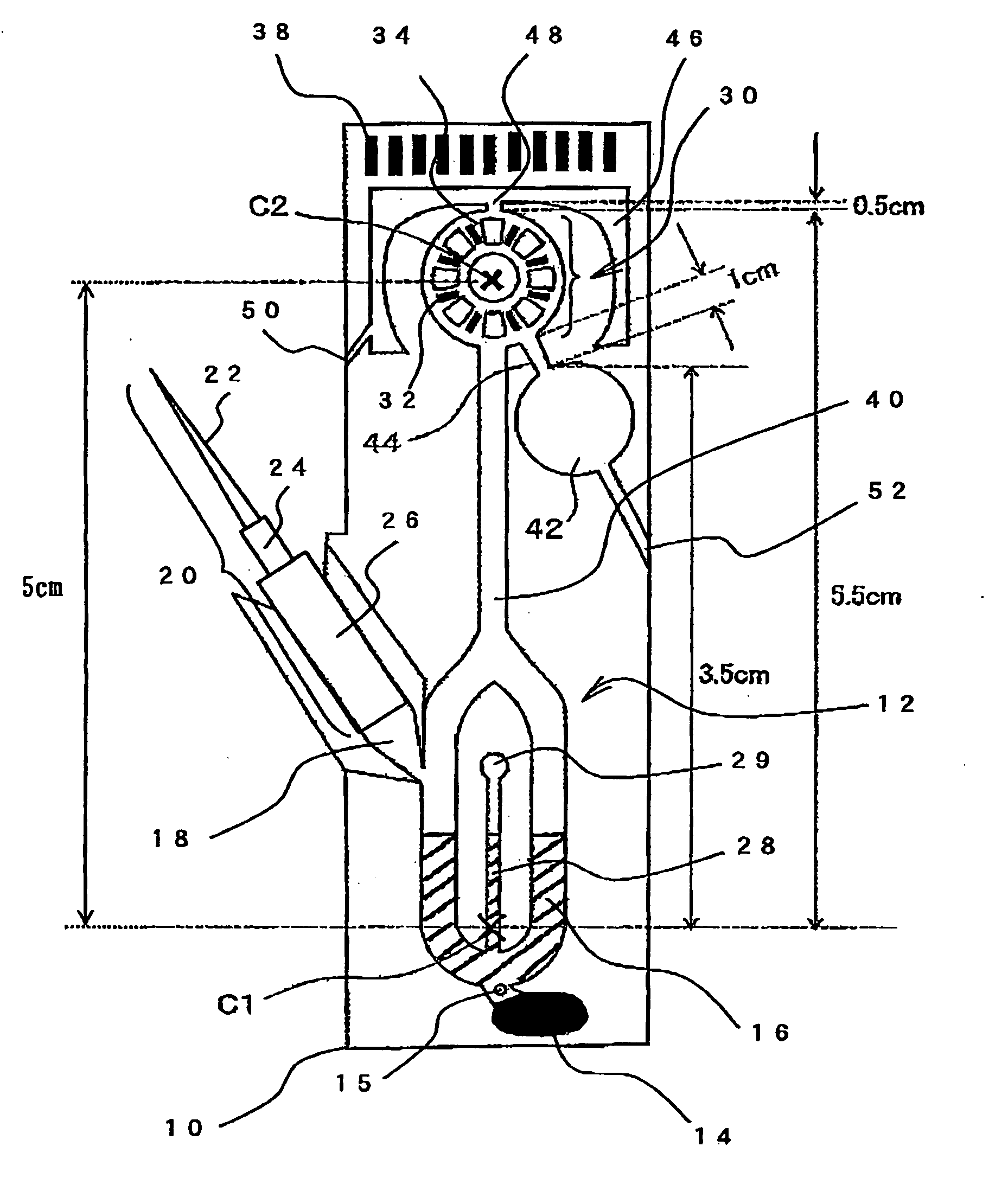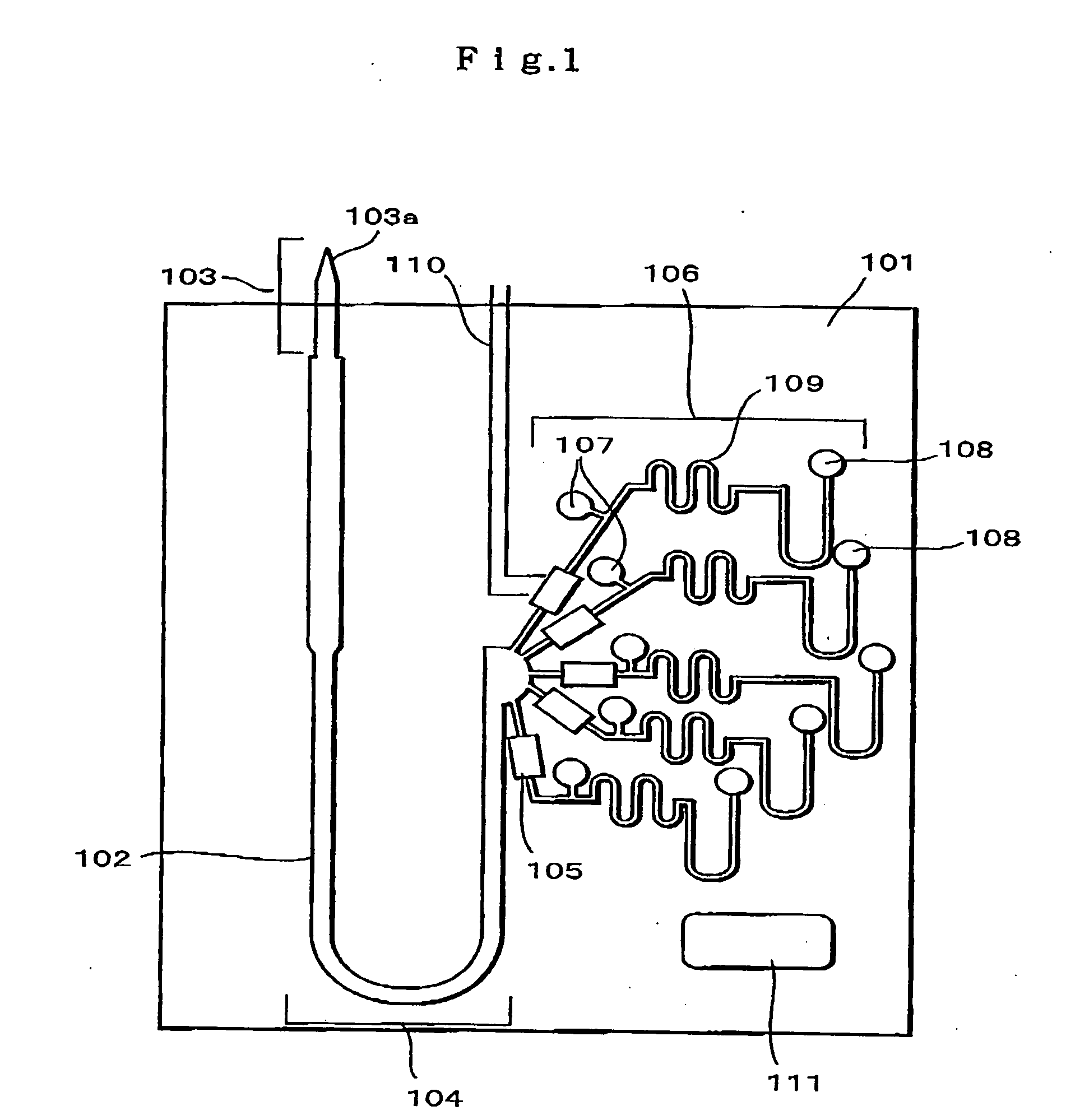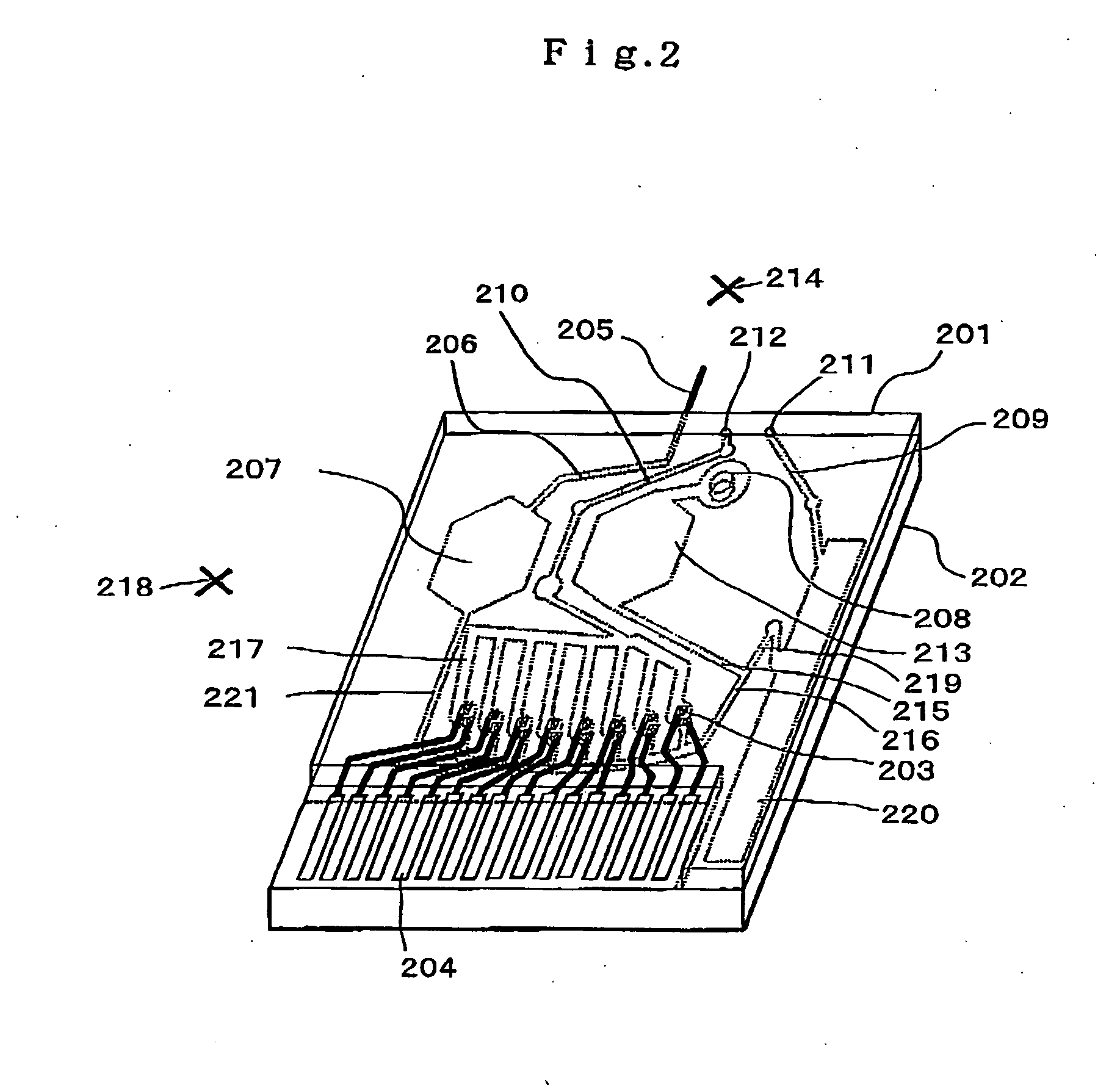Blood Analysis Apparatus and Blood Analysis Method
- Summary
- Abstract
- Description
- Claims
- Application Information
AI Technical Summary
Benefits of technology
Problems solved by technology
Method used
Image
Examples
Embodiment Construction
[0087]FIG. 4 is a schematic planar view of the blood analysis apparatus according to an embodiment of the present invention. Symbol 10 represents the substrate of a blood analysis apparatus formed longitudinally in the diagram, in which a substrate having a flow channel formed thereon is superposed on a substrate having sensor electrodes or wiring formed thereon, and the diagram indicates the internal flow channel structure. The upper and lower substrates are made of, for example, resins such as polyethylene terephthalate (PET) or polyearbonate (PC). Within the substrate 10, a corpuscle / plasma separating part 12 having a U-shaped flow channel at the lower end is disposed, and a corpuscle reservoir 14 as a corpuscle fraction storing part is formed at the bend of the lowest end. The upper part of the corpuscle reservoir 14 is used as a plasma fraction storing part 16 in which the blood plasma is fractionated as supernatant during centrifugation. Symbol 15 represents a backflow stop to...
PUM
| Property | Measurement | Unit |
|---|---|---|
| Magnetic field | aaaaa | aaaaa |
| Magnetic field | aaaaa | aaaaa |
| Fraction | aaaaa | aaaaa |
Abstract
Description
Claims
Application Information
 Login to View More
Login to View More - R&D
- Intellectual Property
- Life Sciences
- Materials
- Tech Scout
- Unparalleled Data Quality
- Higher Quality Content
- 60% Fewer Hallucinations
Browse by: Latest US Patents, China's latest patents, Technical Efficacy Thesaurus, Application Domain, Technology Topic, Popular Technical Reports.
© 2025 PatSnap. All rights reserved.Legal|Privacy policy|Modern Slavery Act Transparency Statement|Sitemap|About US| Contact US: help@patsnap.com



